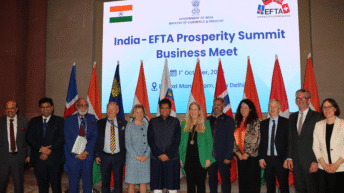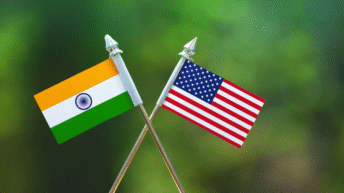
Bihar is a politically complex state. Between 1960 and 1990, the state had seen 23 Chief Ministers and 5 spells of President’s rule. Lalu Prasad Yadav and his wife Rabri Devi brought some stability. Together they ruled for 12 years between 1990 and 2005 with three spells of President rule in between. For a state prone to such instability, Nitish Kumar continuing as Chief Minister for 14 years from 2005 to 2020, except for a 9-month gap when Jitan Ram Manjhi became the CM, was a record of sorts. Hence, everyone expected that one more term for Nitish Kumar would be a near impossibility.
The NDA in Bihar was not in a good shape either. Upendra Kushwaha of the RLSP party left the NDA in 2018 and joined with BSP and MIM to contest the assembly elections. Chirag Paswan, the Parliamentarian son of the late Union Minister Ram Vilas Paswan, also contested separately creating a further rift in the NDA. Chirag’s move to put up LJP candidates only in seats being contested by JD (U) and his vocal opposition to Nitish Kumar led to much speculation forcing the BJP leadership to come out against him.
The BJP has been allied with the Nitish Kumar led JD (U) since 2005, except for two years between 2015 and 2017, when Nitish chose to join hands with the RJD. A section in the BJP wanted the party to contest alone in all seats this time but the party leadership wisely chose to stick to the alliance. Several factors must have influenced this decision, although hypothetically speaking, a stand-alone contest would have probably fetched more seats to the party. One factor could have been the state of the NDA. Two traditional partners in the 25-year-old NDA – Shiv Sena and Akali Dal – have deserted it. JD (U), from the time of its erstwhile avatar as Samata Party, has also been a traditional constituent of the NDA. Its departure would have meant a near-total collapse of the NDA. The other factor could be the experience of the 2015 elections when the party fought almost by itself and fared badly securing just 53 seats. The JD (U) had aligned with RJD and Congress and secured 80 seats for itself and 178 seats for the alliance. The MGB alliance ran the government for close to two years until Nitish Kumar decided to part ways and reestablish NDA government in July 2017.
Being the first election to take place after the outbreak of the Covid pandemic made it even more significant. Bihar faced a major challenge from the panic reverse migration of millions of workers triggered by the pandemic. Tales of their woes filled up media spaces for weeks. Majority of the migrants continued to stay put in Bihar. Their job losses and distress were projected to become a major electoral issue during these polls.
Anti-incumbency, job losses of migrants and alliance woes were a dangerous cocktail enough to affect the chances of the NDA. The Opposition alliance, led by Tejasvi Yadav, ran a high decibel campaign and seemed to attract a lot of popular traction. Young Tejasvi Yadav travelled extensively in the state selling hope and trying to cash in on Nitish Kumar’s fatigued demeanour. All these factors had led many to discount NDA’s chances of winning and a majority of the exit polls predicted a certain defeat for it.
But then, the BJP has a distinct advantage in Prime Minister Modi. Senior leaders are like an albatross around the neck of several parties like the RJD and the Congress. RJD did not use even the picture of Lalu Prasad Yadav in its campaign; however the NDA, in its toughest election, turned to the best redeemer. Victory always has many fathers, but this particular victory in Bihar solely belongs to Modi. Like all tough elections in the past, he carried this one too on his shoulders and shored the alliance to a comfortable majority. Elections are generally seen as arithmetic. But Modi converts them into chemistry. As political scientist Swadesh Singh pointed out, Modi is replacing old verticals like caste and religion with new demographic horizontals. In Bihar, the old M-Y (Muslim-Yadav) vertical has been replaced by a new M-Y – Mahila and Yuva. In his victory speech at the Party headquarters, Modi described them, the beneficiaries of his schemes in the last six years, as ‘silent voters’.
While there is understandable jubilation in the rank and file of the BJP over the Bihar victory, the party still has a long way to go. While it won more seats this time, its vote share didn’t improve. 2010 remains the year of its best election when the party won 91 seats. But its eastward march has certainly begun. The JD (U) has received a setback in this election by losing 28 seats. Analysts blame Chirag for JD (U)’s losses. It is difficult to conclude that the 2.38 million votes that Chirag’s party secured were all Nitish’s votes. They could as well be anti-Nitish votes and would have benefitted the MGB in the absence of Chirag’s party in the fray.
This round of elections has once again shown that there is no respite in the terminal decline of the Congress. Apart from Bihar, by-elections in Madhya Pradesh and Manipur too showed that Congress party has lost its vigour. Almost all the byelections – 5 in Manipur and 28 in MP – were necessitated by the resignation of the Congress MLAs. In Manipur, the BJP secured 4 seats and 1 went to an independent candidate supporting the BJP government in the state. Credit for this result should go to CM Biren Singh. Similarly, in Madhya Pradesh, BJP won 19 seats thanks to the efforts of CM Shivraj Singh Chauhan and Jyotiraditya Scindia.
Of the 58 seats that went for by-polls in 11 states, BJP won 40. There were a couple of failures for BJP too, which are orphans naturally. In Orissa, the BJP lost out to the ruling BJD in both the seats although one of them could have been won with proper strategy and effort. Naveen Patnaik continues to dominate Orissa politics. In Nagaland, the BJP candidate lost the election to an independent while its alliance partner, the NDPP succeeded in retaining the second seat.
The most significant win for the BJP in by-polls came from Dubbaka in Telangana. A stronghold of the ruling TRS, which won the seat just two years ago with a margin of over 60,000 votes, the constituency was captured by the BJP with a slender margin of over 1100 votes. The significance of the Dubbaka victory was highlighted by the prime minister in his tweet, that “our Karyakartas worked very hard” and made “noteworthy efforts”. Dubbaka was won by BJP through the traditional methods of Karyakartas’ efforts, candidate’s image, booth level planning and house-to-house contact.
Overall, this round of elections and by-elections prove two things – one, the popularity of the Prime Minister has reached mythical proportions; second, traditional BJP style efforts too can yield pleasant victories. Both are needed for the BJP.






Good analysis. The coalition of the BJP and JDU, proved to be formidable in the state. It’s continuations is necessary. Credit goes prime minister, for, it’s the trust of people once again reposed on him in this Bihar election.
Excellent article and it’s useful for Bjp leaders discussing in debates.Y youth M mahila it’s explining good.Y AND M Factor is good for every election also
Yes, but we shouldn’t focus on next election, but next generations to be Rashtra Purush and establishing strong nationhood in India. It can be done when we would destruction all dynastic political parties as they will be danger for our democracy in future. Do u foresee it? I do envisage that even our unity will be shaken if dynasts don’t vanish. For this go for amendment of Constitution so that all the parties would be due election by Election Commission, or throgh any other Constitutional bodies so that inner party democracy would prevail like BJP.
Perfect analysis. ‘Brand Modi’ changed political definition to Development & Good Governance . Similarly gave importance to chemistry rather than mathematical numbers. Added to it arrogance of Dynasts is exposed from Dubbak to Kashmir…
In addition, govt benevolence to people like gas connection, freebies attract votes.
Vote splitting too works specially where bulk voting for a single party exists
very balanced and interesting article.
The Modi wave appears to be unbound and reaching new heights and depth. Look at Dubbaka. Karyakarthas from unknown places to Dubbaka,all the way from villages in Srikakulam and Vizianagaram descended on their own ,uninvited and unsolicited,never bothered the local BJP leaders about stay and food,and formed themselves into Booth Committees,worked relentlessly. Why? Did they draw this inspiration from Modi- Shah leadership?
Appears so.so in one hand it is Modi- Karyakartha connect. MKc ,you may call it.
On the hand, Mr Modi’s attention towards Mahila,Yuva and coupled with Atmanirbhata ,MaYA you may call it, appears to be the magical potion for the development of the Nation.
Thus,as the author Mr Ram Madhav has presented his view point succinctly, two phenomena appearing to be creating the buoyancy for BJP,again and again,spirally.
They are : MKc and MaYA.
Modi Karyakartha connect & Mahila Yuva and Atma nirbharta.
T Krishna Prasad.
To the point sir, with Tall image of Modi Ji and with the superb relentless efforts of ground teams across, now BJP is taking a strong position of independent contestant as well in almost all corners, but respecting the NDA ally is the best instrument for long term visions.
Perfect analysis, it gave me confidence that I am also thinking like you in analysing the Bihar election
Perfect
Always a clean cut analysis of things – that’s the author’s forte .. valuable for both political debutants n seniors … 👍
Good one. For long term, BJP find a way to increase vote base.
A good article but you did not mention about the Jharkhand BJP’s defeat in 2 seats in the just concluded election. Even now, BJP is heavily dependent on Modi Magic. Local leadership completely fails to deliver results.